How To Pin And Weld A Flash Hider
In their perfect, all-knowing wisdom, the Usa Congress in 1934 limited the legal length of a rifle butt to no shorter than 16 inches. For barrels nether 16 inches, the National Firearms Human activity requires gun owners to employ for a special license and return unto Uncle Sam a $200 tax stamp.

This projection isn't difficult as long every bit you lot accept access to a welding motorcar and someone who knows how to apply it.
Only the Act includes a caveat. Barrels are measured from the breech face to "the furthermost end of the barrel or permanently attached cage device." A barrel tin can be 14.5 inches long, for example, provided a one.v-inch muzzle device is also permanently affixed.
According to the National Firearms Handbook, "Permanent methods of attachment include full-fusion gas or electric steel-seam welding, high-temperature (1100°F) silver soldering, or blind pinning with the pin head welded over."

The Daniel Defense Extended Cage Climb Mitigator is a not bad choice for this project. They offer the brake in five.56 and .thirty caliber.
In my never-catastrophe quest to avert the NFA licensing procedure, I opted in my about recent AR build to purchase a 14.5 inch Ballistic Advantage barrel and pin/weld a 2 inch Daniel Defense cage brake to the end of information technology.
Information technology may not be the most practical option (I but saved about 2 inches of overall length), but I enjoyed the project and I think the barrel/brake looks dandy with my 15 inch Rainer Artillery runway.
Step 1: Choose your Muzzle Device
Proceed two things in mind when choosing your cage device: butt length and rail length. If you're using a muzzle brake, option one that both meets or exceeds the xvi inch mark and one that will clear your rail.
As the pin/weld option is gaining popularity, many gun parts manufacturers offering brakes designed specifically for this purpose. Daniel Defense offers an extended version of their Muzzle Climb Mitigator to ensure the brake holes will clear a fifteen inch rail. I've as well seen muzzle devices with a pre-drilled hole (more on that beneath).
Y'all tin can also use other cage devices (flash suppressors, flash cans, etc.) that straight the boom forward instead of upwards. In that case, your only business organization will be to meet the 16 inch barrel + brake requirement.
Pace 2: Drill the Pigsty
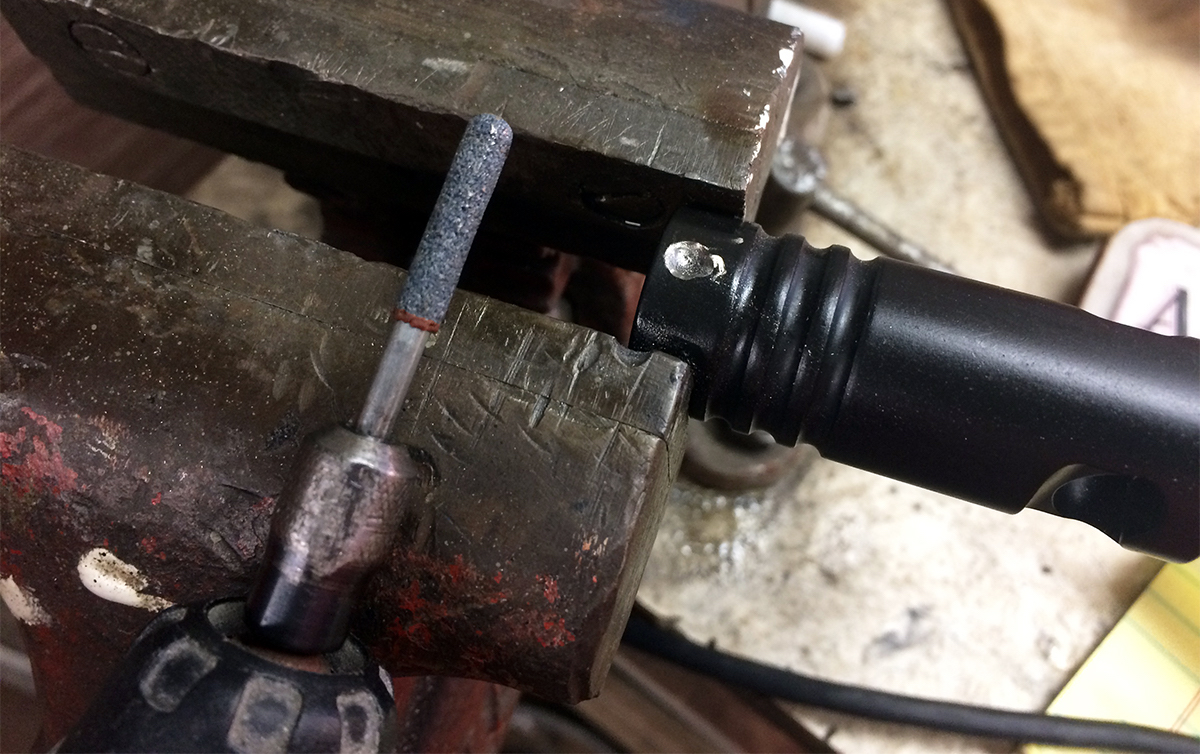
Exist patient on this step. Information technology takes time.
For me, drilling the hole in the brake was the virtually fourth dimension-consuming function of the process. This is a poor human being's how-to guide (encounter title), which ways I didn't have the fancy tools that are probably necessary for this task. Simply that's never stopped me before, and with the combination of a Dremel tool and a ability drill I made it through eventually.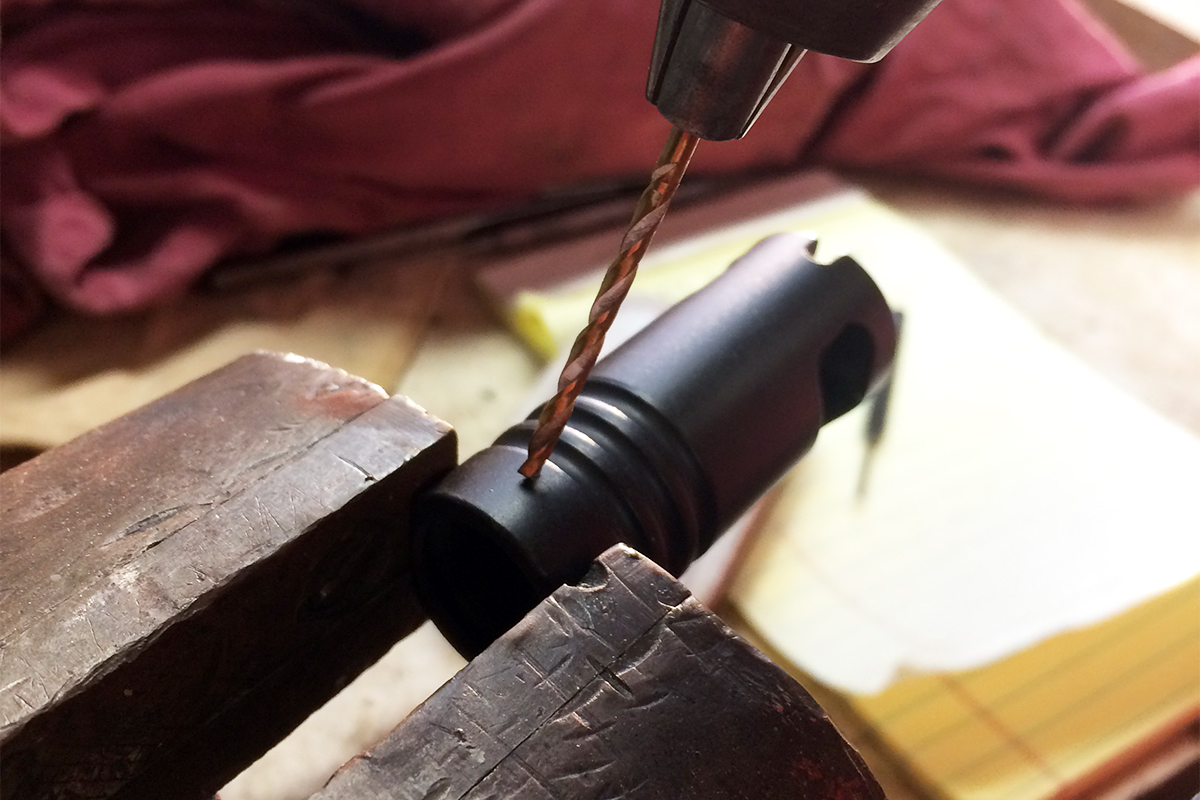
I opted to drill the hole before installing the muzzle device. There's a risk to this method, of grade, and I near wasn't able to thread the brake onto the barrel. But it was much easier to work with the restriction pre-install, and I knew exactly when I'd drilled far enough.
I chose the bit size based on the pin I planned to use. It doesn't have to match perfectly. It but needs to be big enough for the pin to fit and pocket-size plenty to go along the pivot upright.
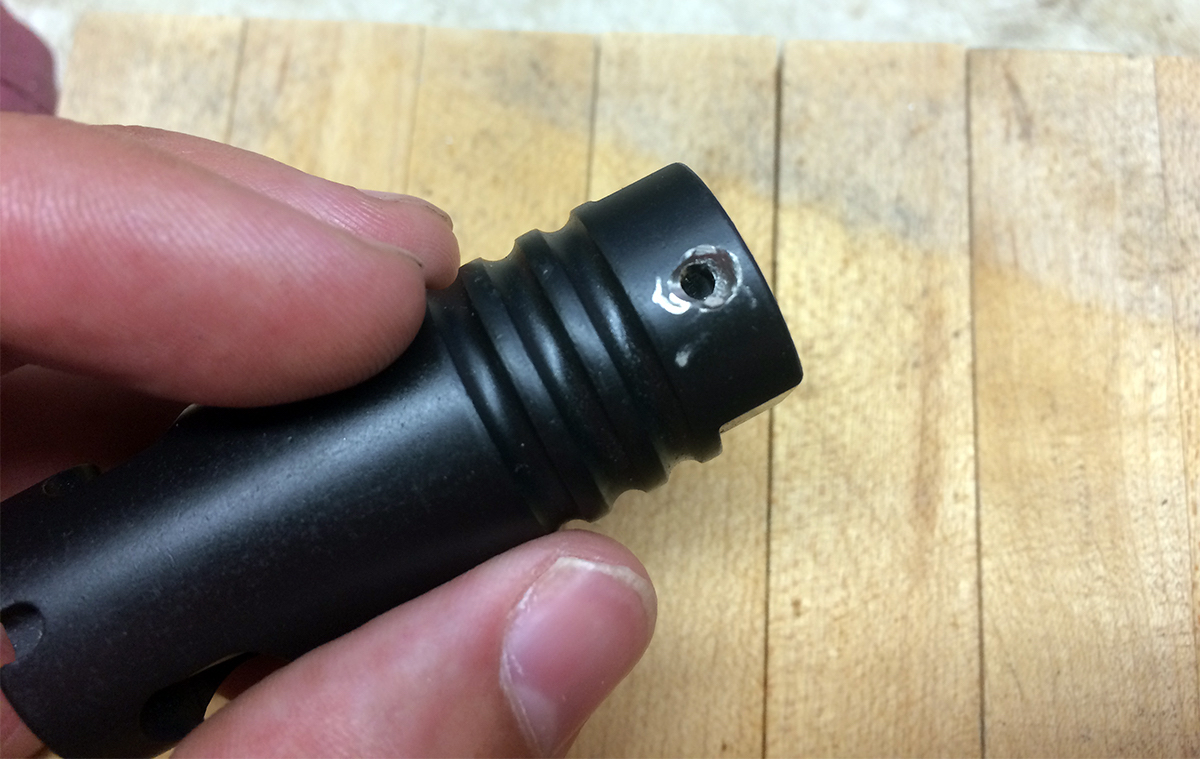
Done. Non the prettiest job in the globe, but a little touch upwardly paint volition go a long way.
Step 3: Measure and Cut the Pin
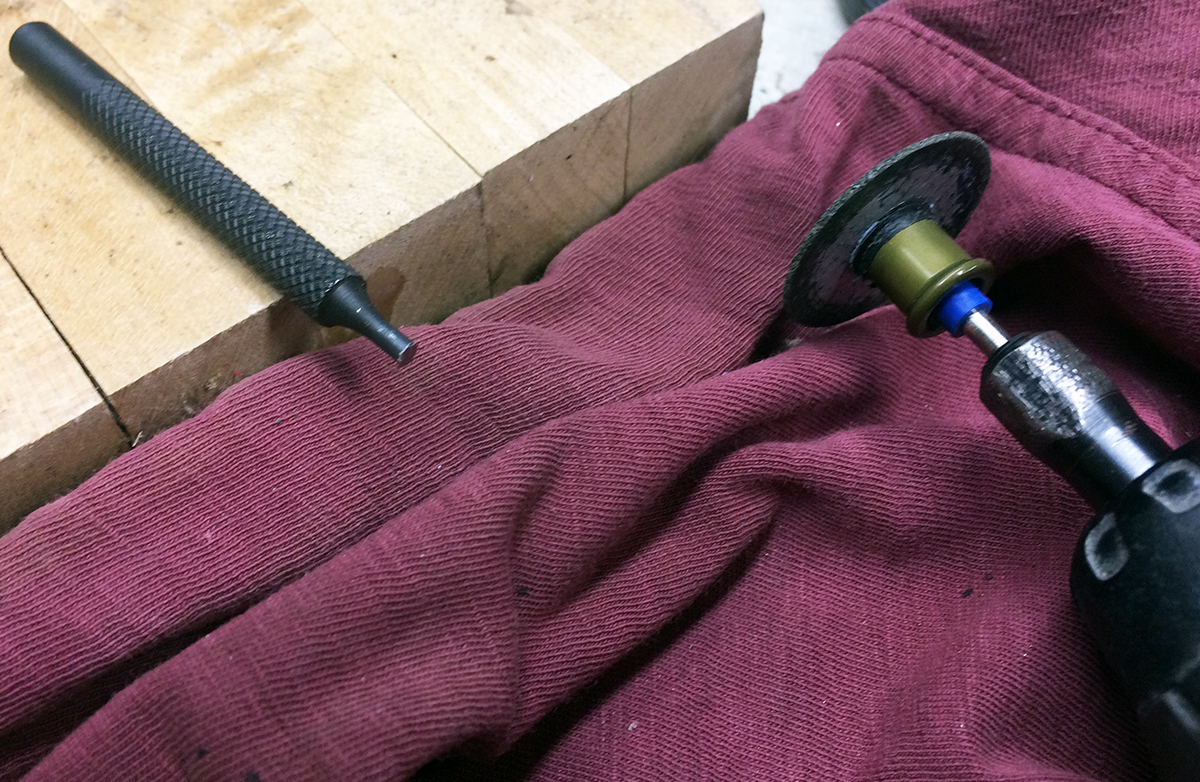
A Dremel bit volition cut through easily enough. I used a 3/32" steel punch.
I used the end of a steel dial for my pin. I dropped the punch into the pigsty, marked the appropriate length, and cut it with a Dremel tool.
Step 4: Install the Pin
First, install your cage device like you lot normally would.
The pivot needs to be seated into the barrel threads so that the brake cannot be turned once the weld covers the pin. For that, I returned to my drill/Dremel combination and cut a small indent into the threads. Patently, you don't want to become carried abroad at this betoken—drilling all the way through would likely ruin the barrel.
Once you have a small pigsty, just tap the pin into information technology until the pin is secure. It'due south as well helpful to circular one side of the pin then it seats more firmly in the indent in the threads.
Step five: Weld the Pin in Identify
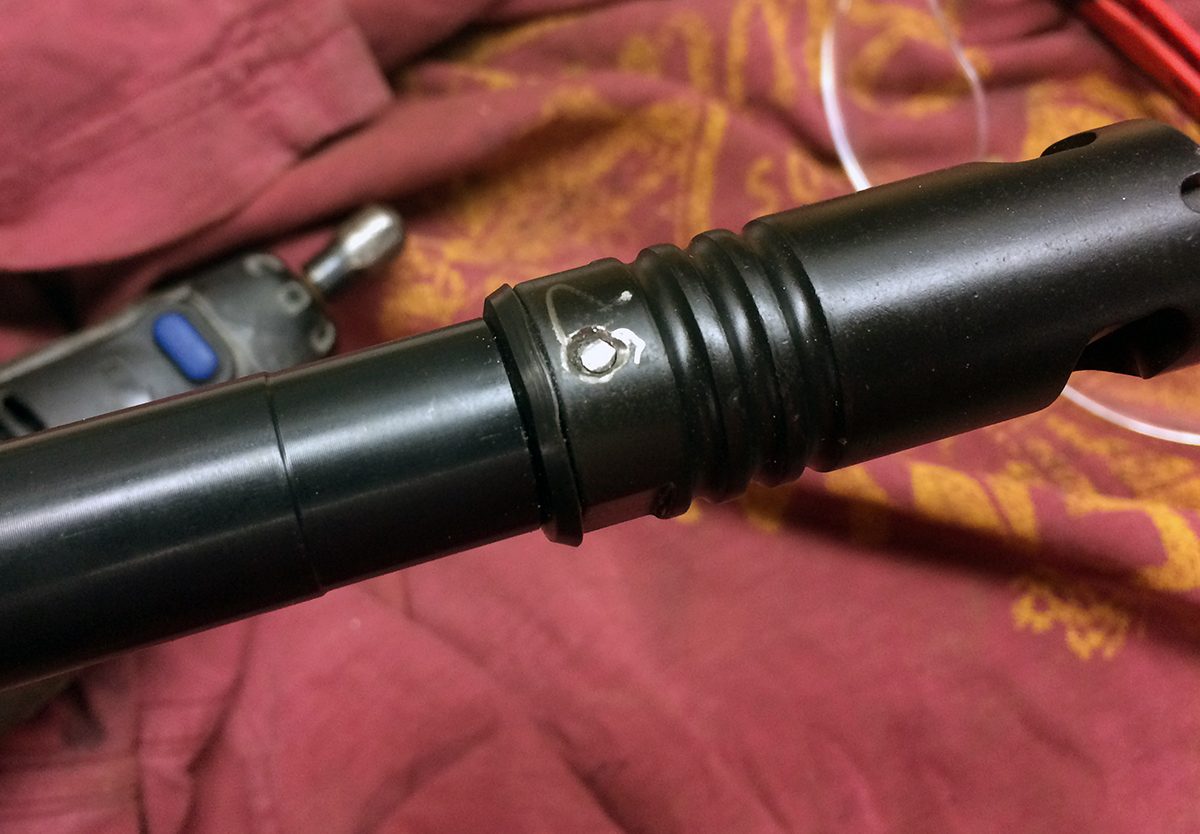 I don't know how to weld, merely I know someone who does. He was kind enough to assistance me out, and he had information technology done in a matter of seconds.
I don't know how to weld, merely I know someone who does. He was kind enough to assistance me out, and he had information technology done in a matter of seconds.
I wanted to file down the bubble and paint over it, only I decided against information technology. The weld should be obvious, merely in case the gun is ever inspected by regime.

This is how nosotros set up the weld. Yous may have to scrape a bit of paint off the muzzle device to become a expert connection.
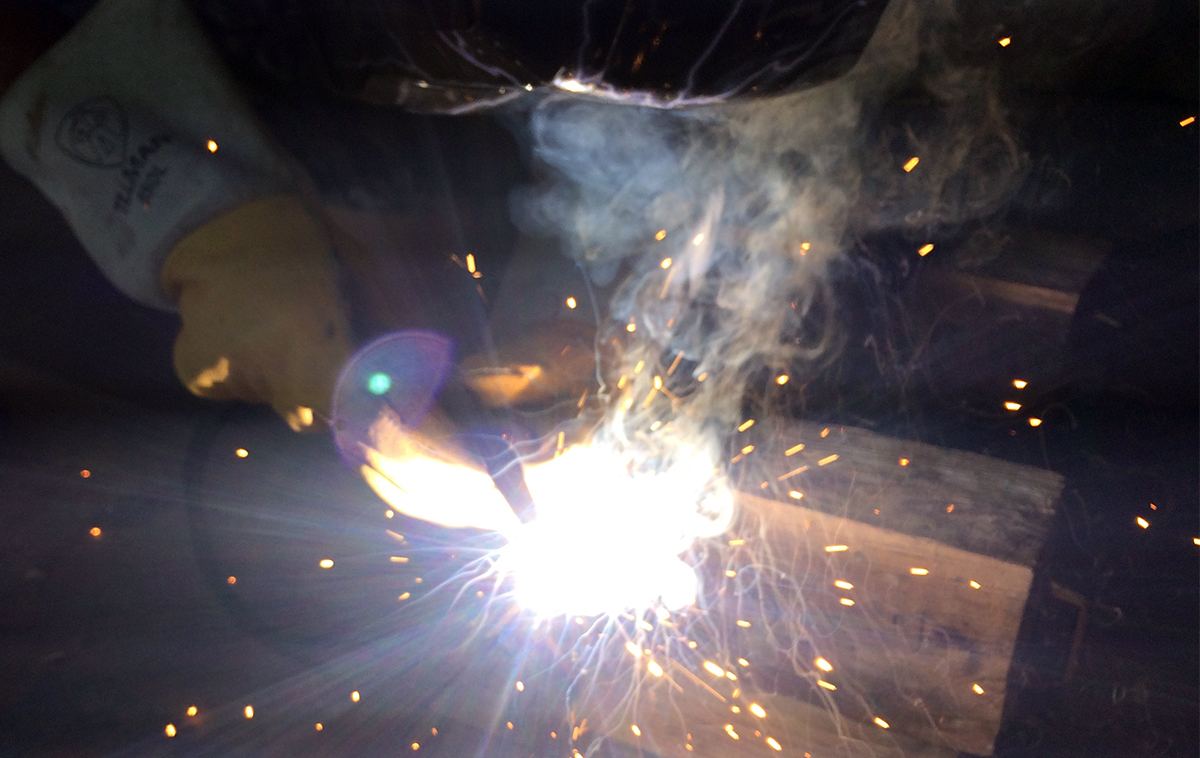
The weld didn't accept any time at all.
Conclusion

The white specs brush off hands. Later that, yous can paint the chimera to match your brake and butt.
I found pinning and welding my muzzle device to my barrel to be a relatively elementary project. Drilling the pin hole was time-consuming but non difficult. And once I cut a correctly sized pivot, the weld was a like shooting fish in a barrel.
If y'all develop hives at the thought of marring your muzzle device, this project probably isn't for you. Also, if y'all aren't 100% sure most your barrel/brake configuration, pinning and welding isn't the way to become. It is possible to remove the cage device, but you might not be able to salve the threads on your butt. "Permanently affixed" means exactly that.
That existence said, a little touch-upwardly paint can make the weld near invisible, and I'chiliad confident that my cage device won't be likewise disruptive to my fellow shooters at the range.
If you used a unlike method, let us know virtually information technology in the comments!
Source: https://www.gunsamerica.com/digest/diy-pin-weld-muzzle-brake/

0 Response to "How To Pin And Weld A Flash Hider"
Post a Comment